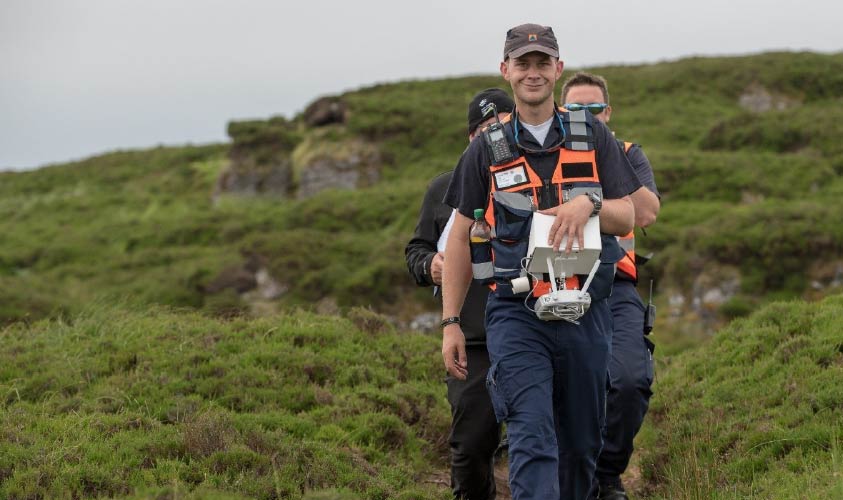
News
DJI and EENA: Drones Help Rescue People Faster, Study Shows
DJI and EENA: Drones Help Rescue People Faster, Study Shows
A study released by world-leading dronemaker DJI has found that when drones are used as part of a search and rescue (SAR) effort, victims can be found faster.
As with any search and rescue operation, the speed with which persons in distress can be found is inextricably linked to their chance of survival; adverse conditions can lead to exposure, leading to death of the victim if not found as quickly as possible.
Conducted in collaboration with the European Emergency Number Association (EENA) and Irish research firm Black Channel, the study simulated search and rescue situations in an effort to better understand the potential drones in SAR operations.
Thirty randomly selected team of researchers embarked on search and rescue missions to find the ‘victims’, who were strategically placed in rocky fields and on cliff edges in Ireland and Wales.
Using a range of off-the-shelf drones, including DJI Phantom and Inspire series drones, the teams used RGB and thermal cameras to search for the victims.
A DJI Matrice 100 drone was also used as a test platform for new software.
Commenting on the study’s implementation, EENA’s Drone Activity Manager said, “Searchers in the study said finding a victim with a drone was harder than they expected, which shows why it is vital for the SAR community to develop best standards for how to use drones.
What patterns should drones fly? What altitude provides the best coverage? What sensors are best for spotting missing people? Which areas are best searched by ground forces, and which by drones? Answering these questions won’t be easy, but it will have a powerful impact.”
The study showed significant differences in the success of SAR operations ‘time-to-locate’ results between missions that used drones and missions that didn’t.
“Overall and by location, the variability in the data is large,” the report states.
However the report notes that while drone-equipped teams were faster, the teams without drones had a higher success rate, reason for which may be ‘the lack of standardised protocols and strategies for drone SAR’.
Feedback from the teams included ensuring all drones used in SAR efforts have redundant systems, high bandwidth transmission links, GPS2 / GLONASS3 integration and integrated software development kits.
Other requirements articulated by the first responder teams also included weather-proofing, high payload and drop capacity as well as on-board lights to enable night-flying.
Storage and maintenance to ensure quick deployment of a drone on any missions, as well as inspection of units prior to any SAR mission is also a consideration, the report says.
The report also notes that building the trust of the public and lawmakers is imperative.
“As with any new technology, educating regulators and the public is important to build trust for the technology and to ensure a legislative framework that is open for drone use. Developing an industry standard for first responder drones to use blue lights is widely supported by the community. Requirements being able to operate drones at night and beyond visual line of sight,” the authors wrote.
The report was released at EENA’s Drones & Public Safety Summit in Brussels, where Romeo Durcher, DJI Director of Public Safety and study co-author said, “The potential for drones to save lives is clear – at least 160 people have been rescued by drones around the world – but the science of how to best use drones for public safety is still in its infancy.”
“Unlike ground-based SAR, which has refined its methods for decades, there is no playbook for drone SAR. We’re excited to be among the first groups of researchers to start writing that playbook, because our work can help save more lives.”
The advancing development of drone technology has been crucial to allowing off-the-shelf drones to be used in search and rescue operations, says Black Channel CEO Gloria Crispino.
“Four years ago, drone technology was still so primitive that it showed little value in early studies. Today, even off-the-shelf drones are powerful enough to help SAR crews find victims faster than traditional search strategies,” she said.
The findings of the report were promising, however it notes that ‘a wider number of trials are needed to obtain evidence-based conclusions’.
“We need to rigorously study how public safety agencies can best deploy their drones in conjunction with ground personnel, and how to ensure they communicate their findings to help bring every search to a fast, safe and successful conclusion,” Crispino said.




















